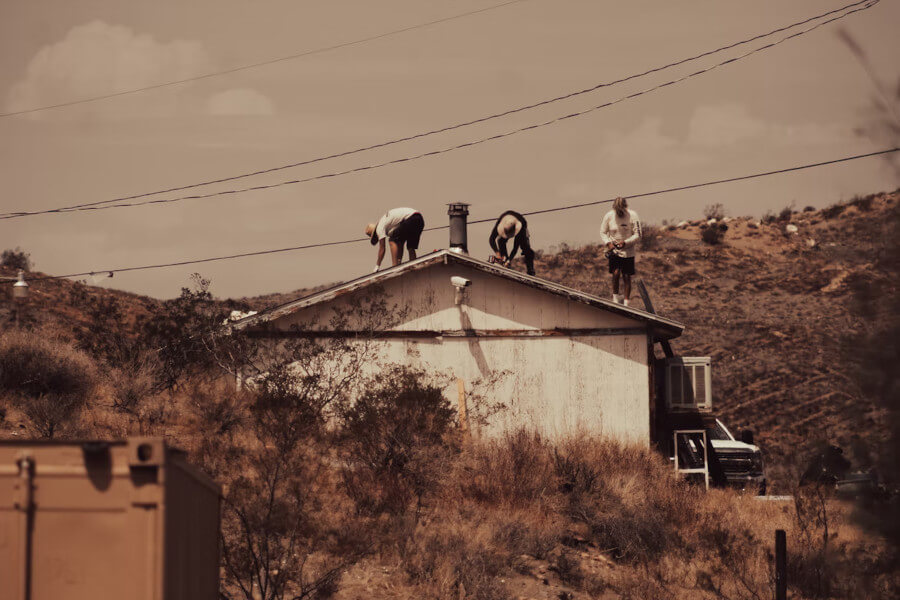4 Most Common Roofing Problems And Tips On How To Solve Them
Roofing is an essential component that not only adds an aesthetic appeal to your home but also provides protection. It ensures that your home is not damaged or destroyed in the event of a hazard. Roofs are prone to suffer various issues, ranging from minor leaks to significant cracking or leakage.
Any roof can develop a problem, but it can be resolved if we act quickly. This article shares a list of the most frequent roofing issues and solutions on how to fix those issues.

1. Blistering of Roof
Many problems can cause blisters on the roof. It can be caused by missing underlayment, too thin sheets, improper ventilation, and the smallest amount of moisture that is present beneath the layer of the roof.
Blistering happens when moisture gets trapped between layers of sheets due to a manufacturing error. During the hot summer, it can become a pestering issue. This is due to extensive exposure to the sun generates a lot of heat from the top, causing this moisture to expand and cause blistering. It mainly happens when shingles or the attic is not ventilated correctly or doesn't have enough ventilation so that air can go in and out.
Shingles are made out of asphalt; the asphalt contains petroleum byproducts (gasoline). When the shingle gets hot and doesn't have enough ventilation to release and absorb gas from the sun, the gas expands and causes a bubble. When the bubble pops, the granules are lost from the top, and it is called shingles.
It is essential to evaluate that the temperature is just right when repairing the blister. You can fix it by cutting an x pattern into the damaged blister and removing it, then applying a thick tender to the surfaces beneath the blister with the same number of layers removed. However, It is better to hire a professional roofing contractor or go for customer insurance for this. Depending on the amount of the damaged blister or the material used in it, they will evaluate the leading cause of the blister and cure it by adding extra weather protection, installing underlayment on top of the current roof, or replacing thin sheets.
2. Dealing with the Roof Leaks
A roof can leak when there is a hole or crack in your roof for several reasons. If your roof is not installed correctly, then after a few days, you can face leakages. Leakage occurs when single-ply membrane roofs are installed with low-quality seamen. For this, you can't repair it on your own, and it is essential to consult with professionals on this issue.
Moreover, roof leakage also occurs when there is a crack in your plastic roof or in seams if you have a metal roof. You can fix it using caulk, but it's a temporary solution. Going for a new roof installation is a long-term solution for this issue. Another problem that you may face is drains that are blocked. Overflowing and blocked drains cause water to pull on your rooftop, which causes leakage. With the detritus, you may clean it. Put on some plastic gloves and scrape out all of the debris in the gutter until you're sure it's clean. On the other hand, you can hire someone to do this task.
Another problem can be flashing, which is a thin material installed to regulate water away from chimneys, roofs, and walls of your roof. It can be damaged by seasonal rain, cracks from hot weather temperatures, and result in roof leakage, and it can be fixed by removing the damaged one and placing a new one. As the roof ages, you are more likely to experience roof leakage and broken vents. However, you can extend its lifespan by good maintenance.
3. Broken Shingles
Shingles can be damaged by thunderstorms, hail blisters, and extreme hot or cold weather.
The problem can be solved by removing the old shingle. A hammer, pray bar or hook blade, roofing nails, and roofing cement are required to repair it. The first thing you need to do is get the old shingles out. Shingles are held in place by nails, so first, take the nails out with the help of a pry bar. Now remove the damaged one and slide the new shingles and put the nails back at the top of the slits, and seal it with routing cement.
4. Ice Dams
When icicles or blocks of ice form at the tip of the roof, these are known as ice dams. They stop the snow and water from draining properly. This water can dampen up and leak into the house and causes damage to the ceiling and walls of the house. You can prevent this by removing the snow from time to time by using a roof rake from the roofline or running hot water over damp, or installing a new attic with ventilation. You can also hire a professional for this.

The problems listed above are the most common roofing issues that might emerge for various reasons. A timely discovery of those damages will not only enable you to repair them on a lower budget. Still, it will maintain the same level of protection for your home as previously.